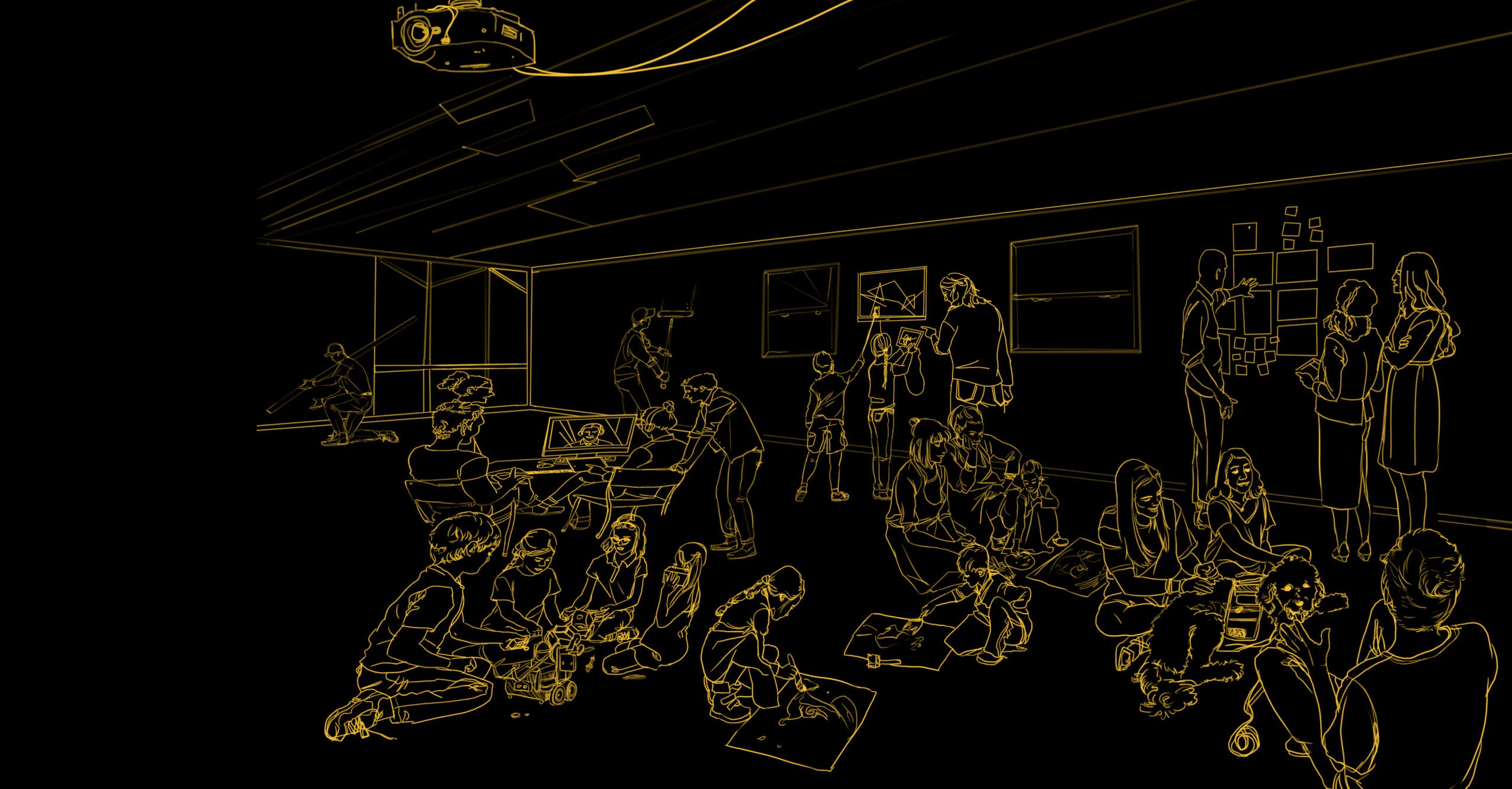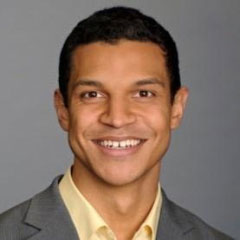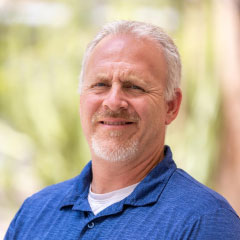How do you implement a new strategic school staffing model — without any new resources? It was an overwhelming proposition, admits Tom Fletcher, principal of Ronald Reagan Elementary School in Yuma, Ariz. Reagan Elementary has begun to implement Next Education Workforce™ team-based staffing models, which required buy-in from educators, students and parents, as well as some creative problem solving. Tom was successful in engaging with these groups to deepen and personalize learning for his students. By taking advantage of professional learning around innovative staffing models, asking questions and piloting a model to improve learning outcomes for his students, Tom worked to take his school to new and exciting levels. By leading his school’s implementation of Next Education Workforce models through collaborative leadership, Tom engaged educators and learners alike to feel more confident and supported in their school.
Question: What are some factors that caused you to consider implementing Next Education Workforce team-based staffing models in your school? Were there hurdles or pain points not being addressed by your old model?
Tom: Years ago, we realized that team-teaching was the most inclusive and equitable way to move forward as we thought about how to meet the needs of all of our learners. A special education teacher who went to Arizona State University encouraged us to get more information about the Next Education Workforce. The teacher was looking to more effectively serve her caseload and participate in more meaningful ways with the general education teachers. We had some hurdles to overcome, especially during the height of the COVID-19 pandemic. Many staff members expressed concerns about sharing, teaming and having different teachers and adults in their rooms. After learning more about team-based models, we attended a Next Education Workforce site visit. I believed in the power of team teaching for a long time, but the turning point was seeing it in action. It was not what I expected or envisioned, especially with respect to how it could apply across grade levels. We started the shift with better support for special education and a focus on equity.
How did you start the shift to team-based models?
First, we exposed staff to the concept of team-based models with a member of ASU’s Next Education Workforce initiative team. They talked to the staff about how this works, explained the possible models and how they can empower schools. For teachers, the messages of “I’m not in this alone” and “together we can accomplish more” were powerful. There were a couple of teams that I thought would not get on board — these were actually the ones who were the first to reach out to initiate the implementation.
Teams that were resistant believe that teaching would become more difficult with additional people in the room. They thought they would be a distraction to the kids. Some felt insecure or uncomfortable teaching in that environment, especially if they were responsible for ELLs, special education or delivering targeted instruction. Once teachers were empowered to explore and consider how they might work together, to better meet the needs of students, these concerns melted away as the staff explored how working together might be good for teachers and students.
What do team-based models look like at Reagan Elementary School?
Kindergarten is its own team. Then, we have combined grade levels for first and second, third and fourth, and fifth and sixth. On each team, there is a Title 1 aide, an Academic Enrichment Tech, an ASU fellows program participant, as well as an interventionist in grades 3-6 funded from ESSER. In all, there are 8-9 adults potentially working with each group of mixed grade level students as an extended team. Teams inform changes that are needed in the master schedule, and we have converted early release on Wednesday to team planning and collaboration time. The purpose is to talk about data and make changes and modifications.
What changes have you noticed in your students since piloting team-based models?
We have seen significant growth in sub groups as a result of collaboration. The kids think it’s a new piece of learning to go to these groups. They are motivated to learn and move groups to get what they need, and we see a lot of movement weekly. The model allows for smaller groups when compared to the whole class size, and we see students getting the impact they need from adults.
What advice do you have for other system-level leaders about Next Education Workforce models?
It’s OK to let go. We have to let go and let things happen naturally. I’m going to be flexible working with you and in my thinking, and model this as professional conversations. This is a great place to be. How can I think outside the box and work with the resources I have? Figure it out with your team. You have to do this with your teachers. You have to get in the right mindset and be open to the possibilities that emerge.
You also have to be patient — this is a multi-year, life-changing continuum of work. I have to be patient. I’m nudging and not pushing them to be accountable to the deadlines we said we would meet. You need goals, vision and patience. We are getting deeper and we are getting more personalized both in student learning and in the way we are adapting the model so that adults can make a bigger impact.
How are educators in team-based models supported as they adopt the new model?
I focus on giving space for them to make their own decisions, giving them minimal parameters to work inside as long as the Next Education Workforce team agrees. We focus on community building, and the space and support for all staff to participate. We encourage a “reset” of the mind to a different way of thinking, and also peer to peer support from teachers to help each other. We have common planning time built into our team model, and a system where the principal and coach check in on grade level planning time, as well as school-wide PLCs.
How did you communicate the change to team-based staffing models to parents, students and other stakeholders in your school/district?
We didn’t officially announce it to the parents. It’s not uncommon to have students leave their classroom for Tier III intervention, EL Targeted Learning or ESS pull out groups. Students are constantly moving around on the campus. At parent conferences teachers casually talked about “What I Need Time” (WIN Time) without much of an explanation. We decided we needed to officially share with parents how our teaming model is different from how we supported students in the past. We held a math night and during this event teachers explained the Next Education Workforce and how this was different from what we were doing previously. The next step is to share more information through our social media channels to provide the public with more information and hopefully drum up some Community Educators/Partners.
What roadblocks did you encounter while implementing team-based models?
We did have some small bumps in the road. Our main restriction was finances. I took the approach of, “I can’t make you attend, but I’ll find the funding to pay for the course.” Almost everyone came, and that led to a struggle for those who missed the experience of the Next Education Workforce Summer Institute. My approach was, you’re either going to grow with us or go. Success breeds success. We received all 50 growth points on the [state of Arizona] AASA exam. We are the only school in the district who received all growth points.
Do you have any last words to other educators out there?
To any educator out there, we can’t keep doing what we’ve done. At some point, you have to take the risk to do things differently. You can’t keep doing what you are doing if it doesn’t work. It was important to us that we saw movement and felt success, because our approach was that if we’re going to do it, we’re going to do it right. I recommend that anyone considering launching team-based models needs to attend Summer Institute and get everybody on board. It had a huge impact by going with a whole school model. Don’t let the budget restrain you. We need to model the creative problem-solving that we expect from our students.
Learn more about Next Education Workforce team-based staffing models.




